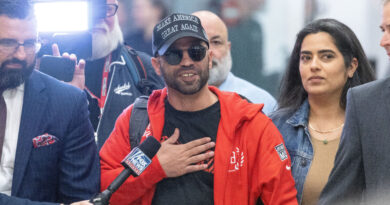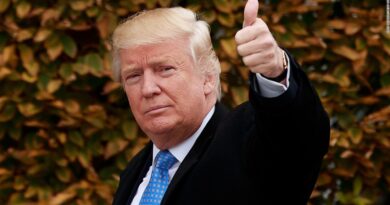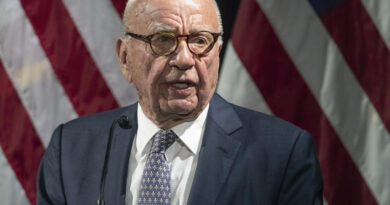Fact Check-Re-examining how and why voter fraud is exceedingly rare in the U.S. ahead of the 2022 midterms

Unfounded and debunked claims that the results of the U.S. 2020 general election, when Democrat Joe Biden defeated former U.S. president Donald Trump, saw significant voter fraud continue to circulate online as the country gears up for midterm elections scheduled for November.
This article aims to provide information and context on how voter fraud in the U.S. is not a “widespread” issue, as some online commentators claim, but made exceedingly rare by existing safeguards.
A Reuters report ahead of the 2020 election containing evidence that voter fraud is rare can be found ( here ).
Speaking to Reuters, Wendy Weiser ( here ), vice president of the Democracy Program at New York University’s Brennan Center for Justice (here) said that “the incidence of fraud and misconduct is infinitesimally rare.”
Weiser highlighted that there are “strong safeguards at every stage” of the voting process to guarantee its integrity.
Likewise, Thomas Hicks, commissioner of the independent and bipartisan U.S. Election Assistance Commission (EAC) ( here ) ( www.eac.gov/about-the-useac ) said that the “actual incidence of voter fraud is relatively small and for the most part is unintentional.”
For example, after the 2020 election, a months’-long analysis by the AP found fewer than 475 cases of potential voter fraud in the six battleground states challenged by Trump (here). For context, there were over 3.3 million votes casted for the presidential run in Arizona alone, the state AP found had the highest number of potential fraud cases (198) ( here ). The AP also found no signs of a coordinated effort and reported that “virtually every case was based on an individual acting alone to cast additional ballots.”
Studies compiled by the Brennan Center ( here ) ( here ), which reviewed cases of voter fraud (prior to the 2020 general election), also found voter fraud is rare.
As another example, an analysis by Justin Levitt, a professor at Loyola Law School and currently a White House Senior Policy Advisor for Democracy and Voting Rights ( here ) found 31 credible cases of voter impersonation between 2000 and 2014, out of a billion ballots ( here ).
OBSTACLES TO SENDING FRAUDULENT BALLOTS
In 2020, as several states adopted measures to automatically send ballot applications or blank ballots to eligible voters due to the COVID-19 pandemic ( here ), Reuters debunked social media posts that shared anecdotes of people receiving ballot applications for past tenants at their address and claimed people could hypothetically fraudulently complete a ballot application, receive a ballot and mail it in fraudulently by forging identities ( here ).
Jennifer Morrell, an election consultant and former election official for Utah and Colorado, told Reuters in August 2020 ( here ) that not only is it a criminal offense to impersonate a voter – in a ballot application and a ballot itself – but to go through with it, fraudsters would need to know a voter’s personal information, such as date of birth, and to be able to forge their signature to match the voter registry.
“Just because there is a ballot that is sent doesn’t mean that ballot is counted,” Hicks stressed, referring to the detailed accounting that election officials apply when checking the legitimacy of a ballot.
Hicks directed Reuters to a video that lays out in detail the different safeguards in place, which vary within states and jurisdictions, for in-person and mail-in voters ( here ), including a voter registry of eligible voters and signature verification.
The National Conference of State Legislatures provides information on home voting, including a section on security features in place. Measures in place to counter voter fraud – that vary within states – include hand-marked paper ballots, signature verification, examining and processing ballots ahead of election day to allow for more verification time, up-to-date address information, security cameras during storage, among others (see Security Features of Voting by Absentee/Mailed Ballots section) ( here ).
A 2020 Reuters article illustrating the process of voting-by-mail and voter verification is viewable ( here ).
WHAT ABOUT THE ALLEGED “EVIDENCE” OF FRAUD SHARED ONLINE?
Ahead of the 2020 presidential election and afterwards, Reuters addressed multiple claims by social media users claiming to show evidence of voter fraud. These cases, however, had logical explanations, such as miscaptioned imagery and footage taken out of context.
VOTER REGISTRATION
Outdated voter registration ( here ) figures were misleadingly used as evidence of “fraud”. Pointing out a “discrepancy” between voter registration numbers and the projection of votes for multiple states, users falsely alleged there were more votes counted than people registered to vote. ( here ) ( here).
Some states also allow same-day registration and Election Day registration which means some of these figures might increase from the latest record available from the state. The NCSL lists the guidelines for each state on their website ( here ).
DROPBOXES
Reuters also reviewed multiple claims of videos allegedly showing misconduct with drop boxes.
A popular iteration, for example, claimed to show the “fraudulent” recollection of mail-in-ballots in L.A. County, that were allegedly invalid because “they were sent after Election Day”. This was untrue, as Reuters previously explained ( here ). Yes, these ballots were picked on Nov. 4, but they were valid since they were deposited by voters on or before Nov. 3, in accordance with California guidance ( here ).
Another claim debunked by Reuters ( here ) involved a person in Pennsylvania that was falsely singled out online as having “fraudulently” deposited multiple ballots in a drop box. The state county clerk’s office, however, said that this person was a “designated agent”, he was legally casting the ballots of people with disabilities who had designated him to do so ( here ). Similar provisions are in place in other states for people who can’t cast their vote themselves ( here )
More recently, claims of “stuffed” drop boxes were raised by a film made by conservative commentator Dinesh D’Souza. As addressed by Reuters in a fact-check article ( here ), the documentary does not provide any concrete, verifiable evidence of widespread voter fraud in the 2020 election. Technology and election integrity experts consulted by Reuters also did not find the geolocation, surveillance or any other information presented showed plausible evidence of fraud.
DESTROYING BALLOTS?
Other videos Reuters addressed claim to show ballots cast for a certain candidate that had been destroyed or discarded.
One example from Oklahoma showed ballots that were discarded because they were spoiled (where the voter mistakenly marked more than one option in a race), and not authentic ballots being thrown away ( here ). Another clip that made a similar claim from Virginia Beach featured sample ballots, not official ballots ( here ).
Other similar examples addressed by Reuters are viewable ( here ), ( here ), ( here )
ELECTRONIC VOTING MACHINES
Reuters also debunked multiple allegations of voter fraud, blaming electronic voting machines and their providers. Examples can be read ( here ), ( here ), ( here ), ( here ), ( here ).
CLAIMS OF FRAUD AFTER 2020 ELECTION PROVEN TO BE FALSE
False claims pedaled by former U.S. President Donald Trump and his followers blaming widespread voting fraud the 2020 election results have been rejected by courts, state governments and members of his own former administration ( here ).
U.S. election security officials have said the election was “the most secure in American history” ( here ), ( here ). Former U.S. Attorney General William Barr, the nation’s top law enforcement official under Trump, said on Dec. 1, 2020, that he had not seen any evidence of fraud that would have changed the election results ( here ).
Furthermore, more than 50 lawsuits brought by Trump or his allies alleging election fraud or other irregularities were dismissed by state and federal judges ( here ).
In Arizona, where State Senate President Karen Fann, the Republican who paved the way for the so-called “full forensic audit” of 2.1 million ballots in Maricopa County, said the review’s overall vote tally matched the initial results in November. “Truth is truth, numbers are numbers,” Fann said at a Senate hearing on the review, which found only small variations, yielding 99 additional votes for Biden and 261 fewer votes for Trump. “Those numbers were close, within a few hundred.” ( here ) ( here )
This article was produced by the Reuters Fact Check team. Read more about our fact-checking work ( here ).


